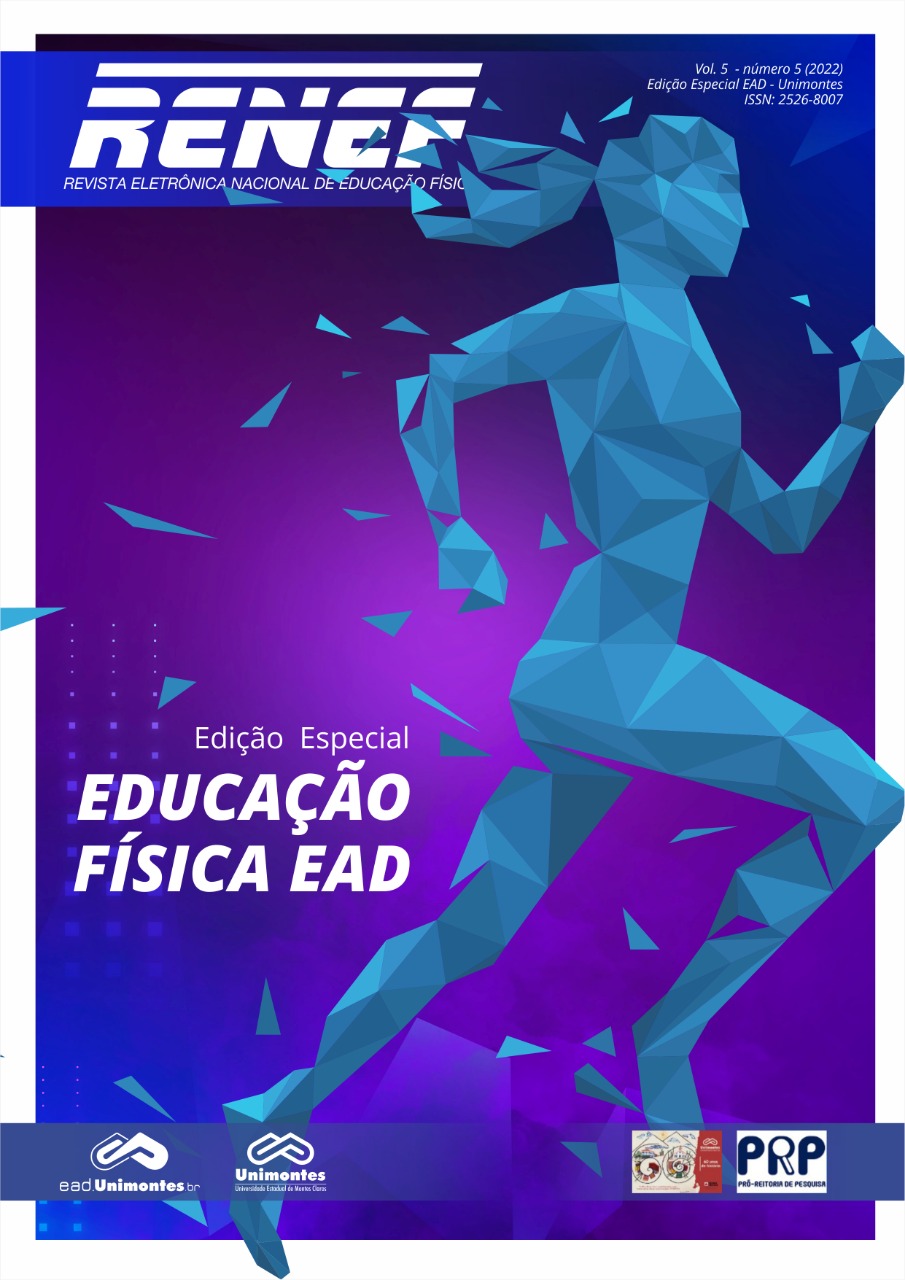Intrinsic and extrinsic motivations in Remote Physical Education classes
Keywords:
Motivation, Physical education, Remote Classes, Teenagers, PandemicAbstract
The objective of the present study was to evaluate social isolation due to the Covid-19pandemic in elementary school students in remote physical education classes. This is a descriptive, cross-sectional, quantitative study carried out with students enrolled in elementary school II in public schools in the north of Minas Gerais. Data collection was performed through google forms. A total of 286 students participated in the study, with a mean age of 12.97 years, SD±1.30, of which 60.5% (n=173) were female and 39.5% (n=113) were male. When evaluating intrinsic and extrinsic motivation, it was observed that girls are less motivated to participate in remote Physical Education classes, when compared to boys. Intrinsic motivation behaviors: unable to perform activities well (p=0.000), ashamed to turn on the camera to participate in classes (p=0.054), classes exercise the body little (p=0.013) and there is no time to practice everything you would like (p=0.000). And the extrinsic motivations: the teacher does not encourage participation (p=0.039), colleagues do not participate (p=0.002) and do not have the materials needed for the class (p=0.008) showed significant differences. The results of this study allow us to affirm that a high number of students of both genders were unmotivated. However, boys were more intrinsically and extrinsically motivated than girls. With this, the importance of the teacher's role as the main outstanding agent during classes is highlighted.
Downloads
References
ALLABADI, H. et al. Impact of COVID-19 lockdown on dietary and lifestyle behaviours among adolescents in Palestine. Dynam Human Health, v. 7, n. 2, 2170, 2020.
AMMAR A et al. Effects of COVID-19 Home Confinement on Eating Behaviour and Physical Activity: Results of the ECLB-COVID19 International Online Survey. Nutrients, v.12, p. 1583, 2020.
BRITO, A. A.; THIMÓTEO, T. B.; BRUM, F. Redes sociais, suas implicações sobre a imagem corporal de estudantes adolescentes e o contexto da pandemia do coronavírus (COVID-19). Temas em Educação Física Escolar, v. 5, n. 2, p. 105-125, 2020.
Direção-Geral da Saúde. REACT-COVID Inquérito sobre alimentação e atividade física em contexto de contenção social; 2020.
LOPES, J. R. et al. Adequação a uma alimentação saudável em adolescentes escolares e perfil bioquímico associado. Cadernos Saúde Coletiva [online], v. 29, n. 3, p. 301-313, 2021.
MAIA, E. G. et al. Padrões alimentares, características sociodemográficas e comportamentais entre adolescentes brasileiros. Revista Brasileira de Epidemiologia, v. 21, n.1, p. e180009,2018.
MALTA, D. C. et al. The COVID-19 pandemic and changes in the lifestyles of Brazilian adolescents. Revista Brasileira de Epidemiologia. v. 24, e210012. 2021.
MARQUES, E. S. et al. A violência contra mulheres, crianças e adolescentes em tempos de pandemia pela COVID-19: panorama, motivações e formas de enfrentamento. Cad Saúde Pública, v.36, e00074420, 2020.
MELO, S. P. S. C. et al. Sobrepeso, obesidade e fatores associados aos adultos em uma área urbana carente do Nordeste Brasileiro. Revista Brasileira de Epidemiologia. v. 23, e200036, 2020.
OLIVEIRA, L. V. et al. Modificações dos Hábitos Alimentares Relacionadas à Pandemia do Covid-19: uma Revisão de Literatura. Brazilian Journal of Health Review, v. 4, n. 2, p. 8464-8477, 2021.
PERRAR, I.; ALEXY, U.; JANKOVIC, N. Changes in Total Energy, Nutrients and Food Group Intake among Children and Adolescents during the COVID-19 Pandemic-Results of the DONALD Study. Nutrients, v. 14, n. 2, p. 297, 2022.
PIETROBELLI, A. et al. Effects of COVID-19 Lockdown on Lifestyle Behaviors in Children with Obesity Living in Verona, Italy: A Longitudinal Study. Obesity (Silver Spring), v.28, n.8, p.1382-85, 2020.
PINHO, L. de. et al. Associação entre prática de atividade física e consumo alimentar em adolescentes escolares. Revista de Educação Física. v. 32, e3253. 2021.
RICHTER, S. A. et al. Como a quarentena da COVID-19 pode afetar o sono das crianças e adolescentes?. Resid Pediatr, v.11, n.1, p.429, 2020.
RUIZ-ROSO, M. B. et al. Covid-19 Confinement and Changes of Adolescent’s Dietary Trends in Italy, Spain, Chile, Colombia and Brazil. Nutrients, v.12 n.6, p.1807, 2020.
SZWARCWALD, C. L. et al. Adesão às medidas de restrição de contato físico e disseminação da COVID-19 no Brasil. Epidemiol Serv Saúde, v. 29, n.5, p.e2020432, 2020.
WERNECK, A. O. et al. Associations of sedentary behaviours and incidence of unhealthy diet during the COVID-19 quarantine in Brazil. Public health nutrition, v. 24, n. 3, p. 422–426, 2021.
World Health Organization (WHO). Coronavirus disease (COVID-19) Pandemic. 2020 Disponível em: https://www.who.int/emergencies/diseases/novel-coronavirus-2019. Acesso em 01 Nov. 2021.
World Health Organization. Diet, Nutrition and the Prevention of Chronic Diseases. Report of a Joint WHO/FAO Expert Consultation. Genebra: World Health Organization; 2003.
WU, C. et al. Risk factors associated with acute respiratory distress syndrome and death in patients with coronavirus disease 2019 Pneumonia in Wuhan, China. JAMA Intern Med, v.180, n.7, p. 934-943, 2020.


















